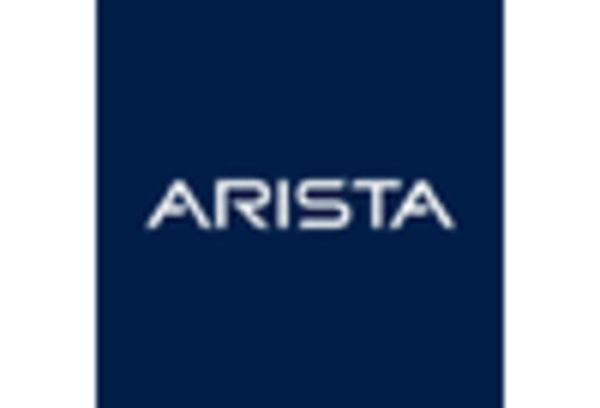Increased Adoption of IoT Devices
The proliferation of Internet of Things (IoT) devices across various sectors in Europe is a key driver for the zero touch-provisioning market. As organizations increasingly deploy IoT solutions, the need for efficient and automated provisioning processes becomes paramount. In 2025, it is estimated that the number of connected IoT devices in Europe will exceed 30 billion, leading to a growing demand for zero touch-provisioning solutions that can seamlessly integrate these devices into existing networks. This trend indicates that businesses are seeking to minimize manual intervention, thereby reducing operational costs and enhancing efficiency. The zero touch-provisioning market is likely to benefit significantly from this surge in IoT adoption, as companies look for scalable solutions to manage their expanding device ecosystems.
Shift Towards Remote Work Solutions
The ongoing shift towards remote work arrangements in Europe has catalyzed the demand for zero touch-provisioning solutions. Organizations are increasingly adopting remote work policies, necessitating the deployment of secure and efficient network configurations for remote employees. In 2025, it is projected that over 40% of the European workforce will engage in remote work, creating a pressing need for automated provisioning systems that can ensure seamless connectivity and security. The zero touch-provisioning market is positioned to thrive as businesses seek to implement solutions that facilitate remote access while minimizing the complexities associated with manual configurations. This trend underscores the importance of agility and responsiveness in provisioning processes, which are critical for supporting a distributed workforce.
Growing Demand for Network Scalability
As businesses in Europe expand their operations, the demand for scalable network solutions is becoming increasingly pronounced. The zero touch-provisioning market is poised to benefit from this trend, as organizations require provisioning systems that can easily adapt to changing network demands. In 2025, it is expected that the market for scalable networking solutions will grow by over 20%, driven by the need for flexibility in network management. This growth indicates that companies are looking for solutions that can accommodate fluctuating workloads without compromising performance. The zero touch-provisioning market is likely to play a crucial role in enabling organizations to achieve the scalability they require, thereby supporting their growth objectives.
Regulatory Compliance and Data Privacy
The stringent regulatory landscape in Europe, particularly concerning data privacy and security, is a significant driver for the zero touch-provisioning market. With regulations such as the General Data Protection Regulation (GDPR) in place, organizations are compelled to adopt solutions that ensure compliance while managing their IT infrastructure. In 2025, it is anticipated that compliance-related expenditures will account for approximately 15% of IT budgets across various sectors. This trend suggests that businesses are increasingly investing in automated provisioning solutions that not only streamline operations but also enhance compliance with regulatory requirements. The zero touch-provisioning market stands to gain from this focus on regulatory adherence, as organizations seek to mitigate risks associated with non-compliance.
Advancements in Artificial Intelligence and Automation
The rapid advancements in artificial intelligence (AI) and automation technologies are significantly influencing the zero touch-provisioning market. In Europe, organizations are increasingly leveraging AI-driven solutions to enhance operational efficiency and reduce human error in provisioning processes. By 2025, it is projected that AI technologies will be integrated into over 30% of provisioning systems, streamlining workflows and improving accuracy. This trend suggests that businesses are recognizing the potential of AI to transform traditional provisioning methods, making them more efficient and reliable. The zero touch-provisioning market is likely to experience substantial growth as organizations adopt these innovative technologies to optimize their provisioning strategies.


















Leave a Comment